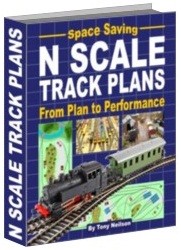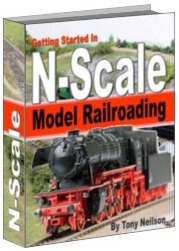Types of N Scale Freight and Passenger Cars
Passenger cars and freight cars for model N trains come in a variety of styles. Once you select the engine, a virtually unlimited supply of prototype cars exists to study, model and employ in your model railroad. Rolling stock is an important aspect of your model train layout since many home layouts can contain up to 75 cars. Think about the trains you’ve seen crossing the countryside and the sheer number and variety of cars attached to those trains.
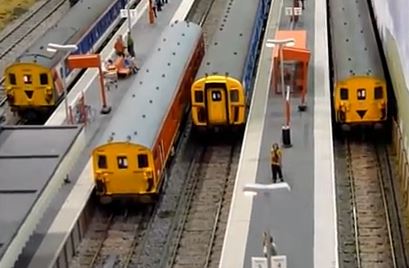
Depending on the type of train you’re working with, you can choose between freight and passenger cars, but for consistency, you shouldn’t mix freight and passenger cars. An understanding of the different types of cars available can help you narrow down your search when looking for cars for your train set.

Before hitching up the cars in a train it is important to consider the type of track configuration and track gradient that the train will need to travel. In real-world railroading there are three basic grades; a “light-grade” of 0.8% – 1%, a “heavy-grade” of 1% – 1.8%, and a “mountain-grade” which is typically above 1.8%.
A good quality N scale locomotive should be able to haul approx. 15 cars up a steep gradient of 4%. However, many in the hobby would consider a 15 car train to be too short to interest them.
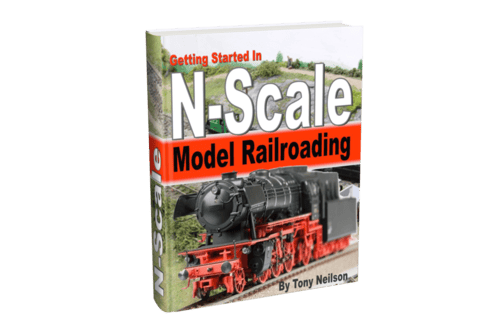
Freight Cars
Various manufacturers and retailers such as the Atlas, Kato, the InterMountain Railway Company, Fox Valley Models, Bachmann, Broadway Limited Imports, Hornby Arnold and others provide a large selection of freight cars that work with N scale trains.
Boxcars: Boxcars are basically a box on wheels. These cars in the real world transport non-perishable products. Boxcars are sealed and provide protection from the elements. Any number of items might get shipped in a boxcar including appliances, grain and automobiles.
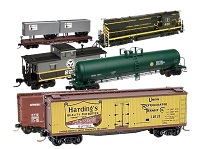
Flatcars: As the name suggests, flatcars consist of a single platform used to transport material that doesn’t fit inside a boxcar. Generators and other items that would exceed the clearances available in a traditional boxcar would get shipped on these cars. Flatcars on N scale systems tend to be very light and may experience problems during operation as a result. When taking curves and turns, these cars may tip or fall off the track. Many modelers pour lead and add additional weight to the underside of the car to prevent this issue. You can also get creative and add small props to the cars, like miniature tractors or stacks of lumber.
Hoppers and Gondolas: Both hoppers and gondolas are used to transport goods that don’t need protection from the elements. Gondolas are essentially flatcars with sides. Hoppers have doors on the underside of the car to make it easier to unload coal and other types of cargo.
Tank Cars: Tank cars ship liquids and potentially dangerous chemicals. They come in a variety of shapes and styles and often come in a rounded cylindrical shape. Refrigerator Cars: When you need to ship temperature-sensitive goods, you can use a refrigerator car. These cars have insulated doors and hatches in the roof. Often, these cars were traditionally used to haul meat products and often bear advertising logos on the side.
Cabooses: The caboose has been largely eliminated in real-world applications. However, it used to be an important part of any train. If you want a more modern application of the caboose, consider installing a Flashing Rear End Train Device (FRED). Modelers that have trains from the 1990s and earlier can keep that historic feel and incorporate a caboose on their trains.
Passenger Cars
The passenger cars carry passengers and each car has various functions depending on the train. There are cars for sleeping, entertainment and various types of dining. Passenger cars can be purchased from Atlas, Kato, Athearn, Bachmann and others. When selecting passenger cars, it’s important to do your research and find cars that operated together. Often, passenger car types were specific to a particular railroad, so you wouldn’t necessarily see a coach mixed with a sleeper car.
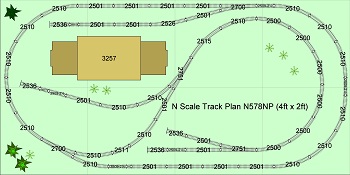
Kits are also available for those that want to build their own passenger cars from scratch. Since passenger cars don’t require any electricity to run, the locomotive can pull the cars and you don’t have to worry about dealing with any of the electrical work, except in the case of cars that come with their own internal lighting.
Coaches: These cars accommodate passengers that plan on taking trips for one to two days. They are not designed for extended trips, and typically consist of several windows like an airplane to allow passengers a view of the countryside.
Parlor Cars: These cars were an upgrade from coach. Serving the first-class, these cars served the richer patrons and would be placed away from the coaches, when a rain hauled both types of cars. The seats in these cars tended to be much more comfortable and provided the option to swivel and move in different directions.
Sleepers: Sleepers are more sophisticated cars that can house entire bedrooms, suites or simple beds for passengers. Most model trains can be opened up so the N scale modeler can add their own miniature details to the inside of the sleeper. Sleepers went out of fashion in the early 1950s, although there are still many tourist train services fitted with sleeping compartments for overnight journeys.
Dining Cars: Passengers need a place to eat and dining cars provide that option. Dining cars are essentially restaurants on wheels that offer a wide selection of food products for long distance journeys.
Café and Lounge Cars: The cars tend to be a bit smaller than dining cars and offer snacks and foods that don’t require a full kitchen to serve. Attach a few of these cars between your coaches and observation cars to give passengers snacking options.
Observation Cars: The large windows on these cars make them an ideal choice for incorporating fine detail within the car. These cars were designed to allow passengers a clear view of the scenery. Observation cars are typically placed at the rear of the train, and some even come with glass-roofed ceilings. Observation cars are among some of the most intricately detailed cars available.
Miscellaneous Cars: While passenger and freight cars are the two most common types of cars, there are other cars that were typically included on passenger trains. Railway Post Office cars were employed by the Post Office and included on passenger trains. Clerks would work on these cars and sort mail while the train was in motion. Bulk-mail storage cars were also attached to passenger trains and contained mail that was already pre-sorted. These cars are typically attached to the rear of the train and in the real world help trains to bring in additional income, especially on long-distance passenger trains that may otherwise be unprofitable.


